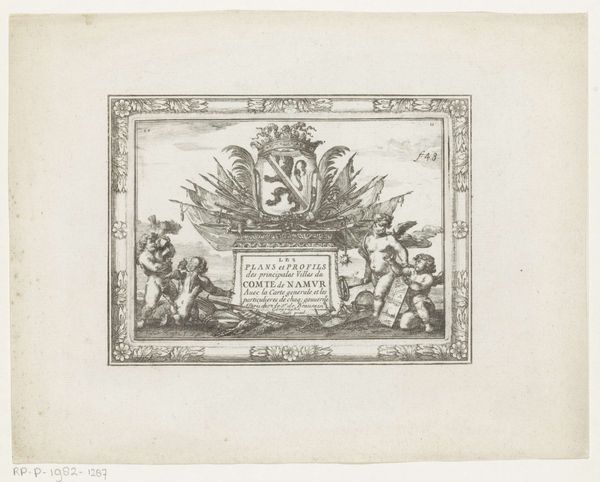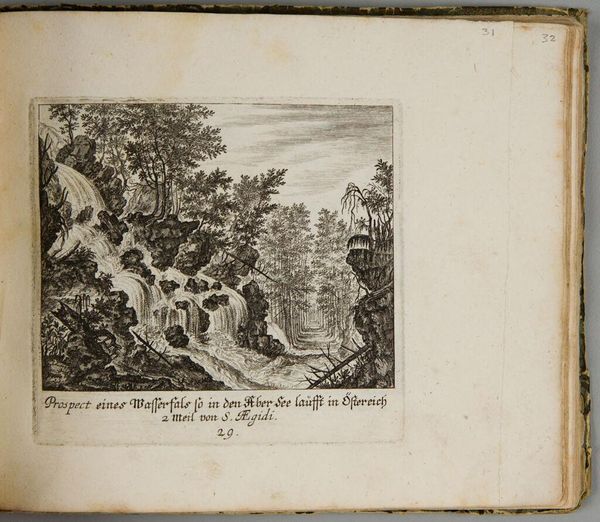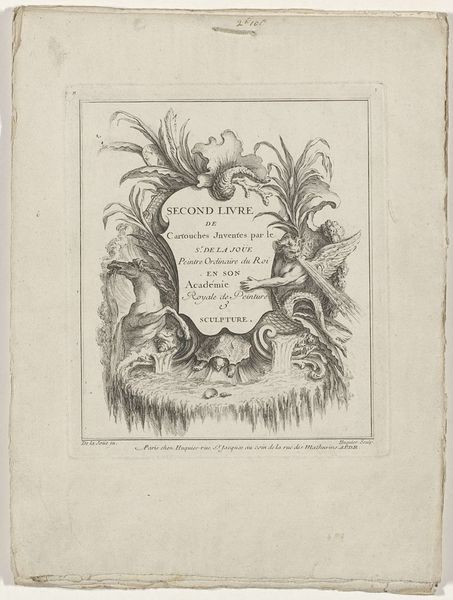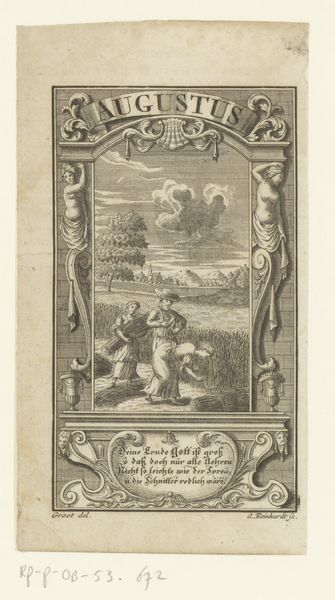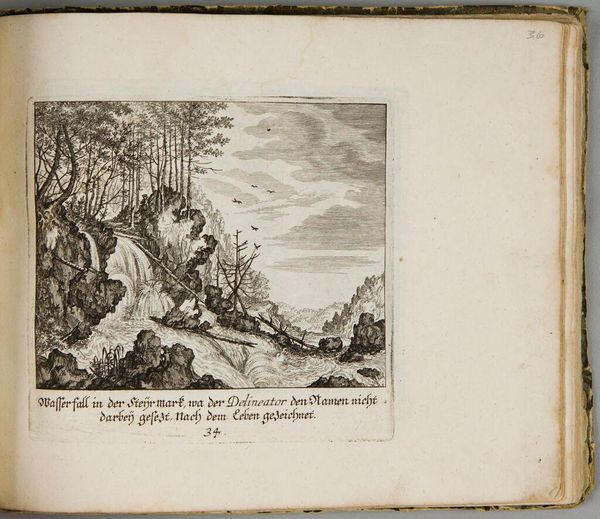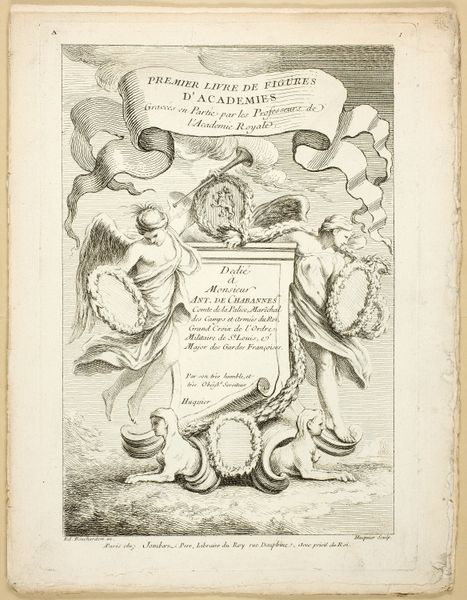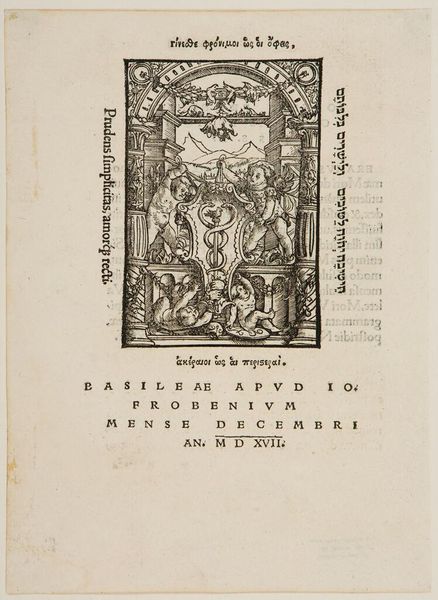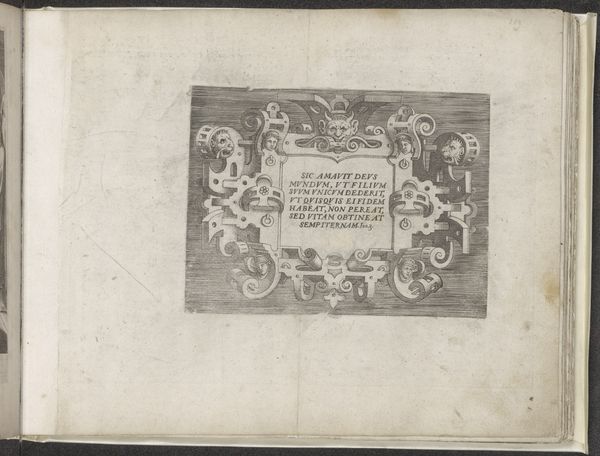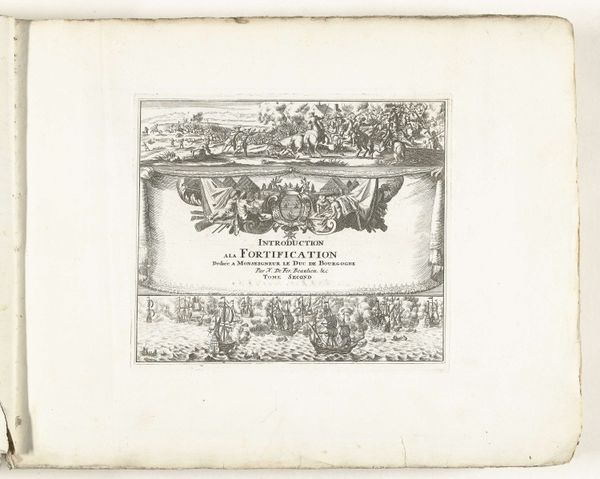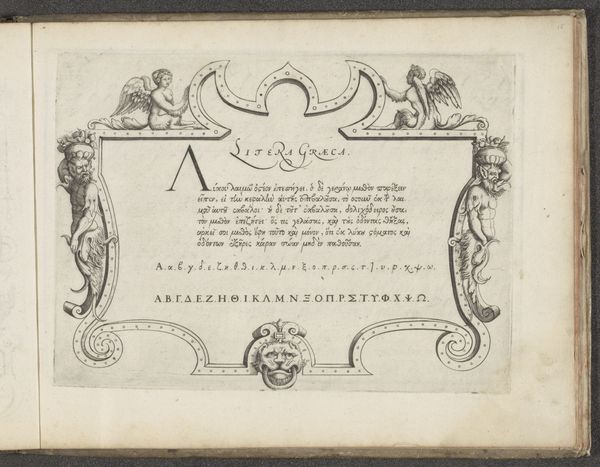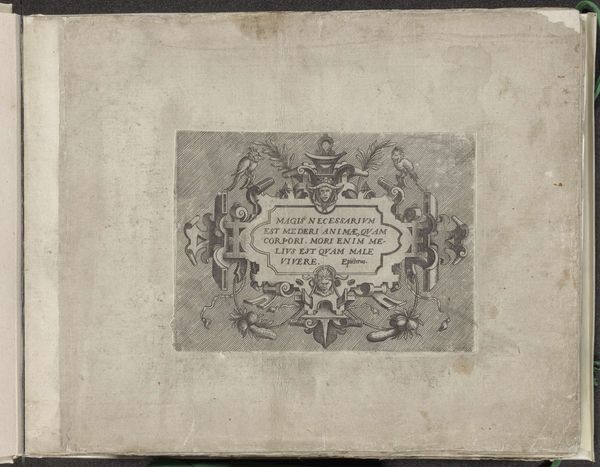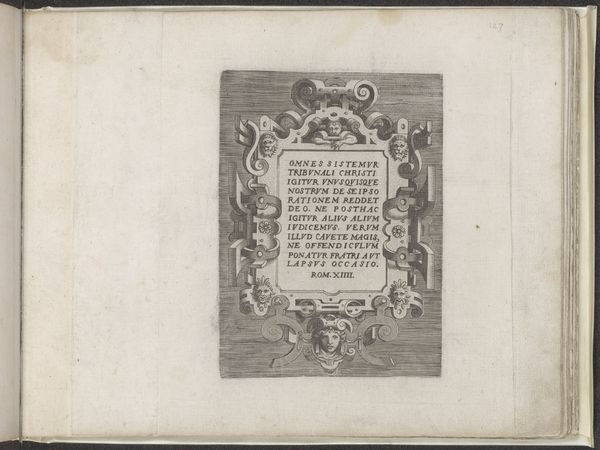
Titelprent voor prentwerk: Les Forces de l'Europe, Asie, Afrique et Amerique (deel 4), ca. 1702 1702 - 1703
0:00
0:00
print, engraving
#
baroque
# print
#
line
#
cityscape
#
history-painting
#
engraving
Dimensions: height 218 mm, width 276 mm
Copyright: Rijks Museum: Open Domain
Editor: This is "Titelprent voor prentwerk: Les Forces de l'Europe, Asie, Afrique et Amerique (deel 4)" which translates to Title Print for print work: The Forces of Europe, Asia, Africa, and America (part 4), it’s a print made around 1702 by Jan van Vianen. The fine lines of the engraving and the bustling scene within the border really give it a sense of historical importance, even gravitas. What strikes you most when you look at this? Curator: What I find immediately compelling is the relationship between labor, power, and representation that this print embodies. Consider the immense work required to produce such a detailed engraving, and how that craft itself becomes a signifier of authority. Look at the depiction of military might, cannons, fortifications - and ask yourself, how does the medium reinforce the message of European dominance? Editor: That's a really interesting point, thinking about how the *act* of creating the artwork contributes to the meaning. So the very process strengthens its message. It’s almost propaganda through craft? Curator: Exactly! The clean lines and precision of the engraving lend an air of authority and objectivity, masking the subjective biases inherent in portraying European power. Who is laboring? Where are the raw materials sourced from? How would an artisan, an enslaved worker, or an indigenous person, perceive and depict the making of such imagery? It forces us to recognize the intricate networks of material and social relations woven into even seemingly straightforward representations of power. Editor: That shifts the focus entirely, from just *what* is being shown to *how* and *why*. It's not just a scene; it's a product of specific labor and global power dynamics. Thanks, that’s really opened my eyes to the layers beyond the surface image. Curator: Indeed, considering the materiality and means of production reveals the complex networks of power embedded within seemingly simple images, compelling us to think more critically about the art we consume.
Comments
No comments
Be the first to comment and join the conversation on the ultimate creative platform.
